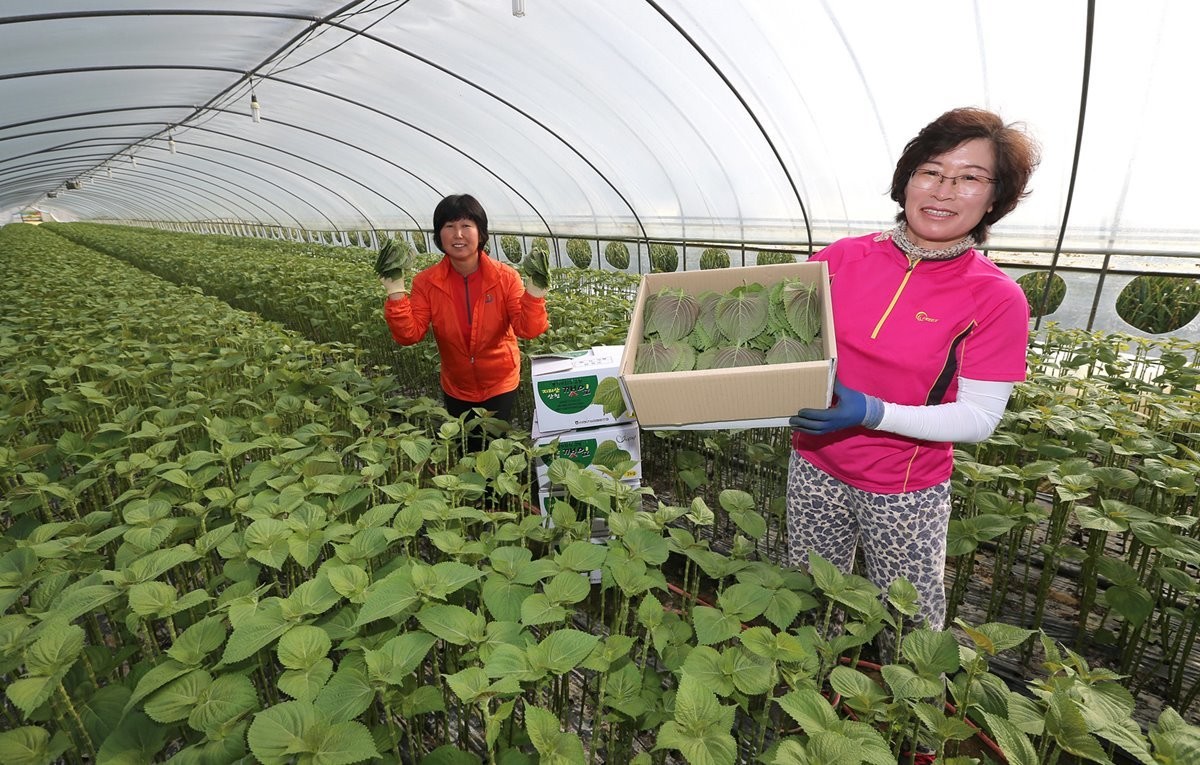A Korean Culinary Ingredient Only South Koreans Eat (Not Even North Koreans Do)
2025-02-10 11:59
add remove print link
Featured on Please Take Care of My Refrigerator, Actor Son Suk-ku Reveals His Love for This Korean Staple Ingredient
Perilla leaves, a staple of Korean cuisine, are gaining international attention for their uniqueness. While perilla plants are cultivated across several Asian countries, including China, Japan, India, and Thailand, Korea is the only country where the leaves are actively consumed as a primary ingredient. Surprisingly, even in North Korea, perilla leaves are rarely eaten outside of the Gaeseong region.

Koreans enjoy perilla leaves in various forms—wrapped with meat, pickled, fried, or added to salads and kimchi. The nutritional benefits are impressive: perilla leaves contain over 10 times the vitamin A found in carrots and boast 211mg of calcium per 100g, which is five times that of spinach. They also have twice the amount of iron as spinach and are rich in antioxidants, including phenolic acids, caffeic acid, and rosmarinic acid, which contribute to overall health.
On a recent episode of JTBC’s Please Take Care of My Refrigerator, actor Son Suk-ku shared his deep fondness for perilla leaves, saying, “I love foods with a strong perilla leaf aroma. When I lived abroad as a child, visiting the Korean market to buy perilla leaves was always a must.” Chefs Kwon Sung-joon and Edward Lee showcased innovative ways to incorporate the ingredient. Kwon fused global cuisines by creating a “Perilla Ragu Gnocchi,” while Lee presented a “Somen Noodles and Steak Wrap with Perilla Leaf Sugar Sauce,” highlighting the versatility of the leaf.

Perilla leaves are especially beneficial when paired with meat. They provide essential vitamins often missing in red meats like pork, beef, and lamb. Vitamin K in perilla leaves helps prevent the increase of cholesterol caused by saturated fats in meat, while their fiber and chlorophyll aid digestion and prevent constipation when paired with meat-heavy meals.
Their potential cancer-fighting properties are also noteworthy. Professor Lee Ki-won of Konkuk University’s Department of Biotechnology, along with a research team from Seoul National University, discovered that luteolin, a polyphenol in perilla leaves, directly binds to carcinogenic proteins, reducing cancer risk. It can help counteract harmful compounds like heterocyclic amines (HCAs) and polycyclic aromatic hydrocarbons (PAHs), which are formed when meat is cooked at high temperatures.

Perilla leaves also promote eye health, thanks to their high levels of lutein and beta-carotene, which can prevent vision loss and dry eye syndrome. Their essential oil component, perillaketone, has antimicrobial properties that help prevent foodborne illnesses. Additionally, the leaves’ abundant vitamin K prevents calcium loss from bones, promoting bone development. Luteolin further supports inflammation reduction, making it effective in preventing inflammatory diseases. Experts recommend consuming perilla leaves raw when possible, as cooking can degrade their vitamin C content.
Perilla seeds, used to produce perilla oil, also hold nutritional value. Perilla oil contains over 63% omega-3 fatty acids, the highest content among plant-based oils, making it a key component of Korea’s health-conscious diet.
With their growing recognition, experts predict that perilla leaves and perilla oil could soon become globally valued as essential health foods, representing Korea’s unique culinary heritage.



